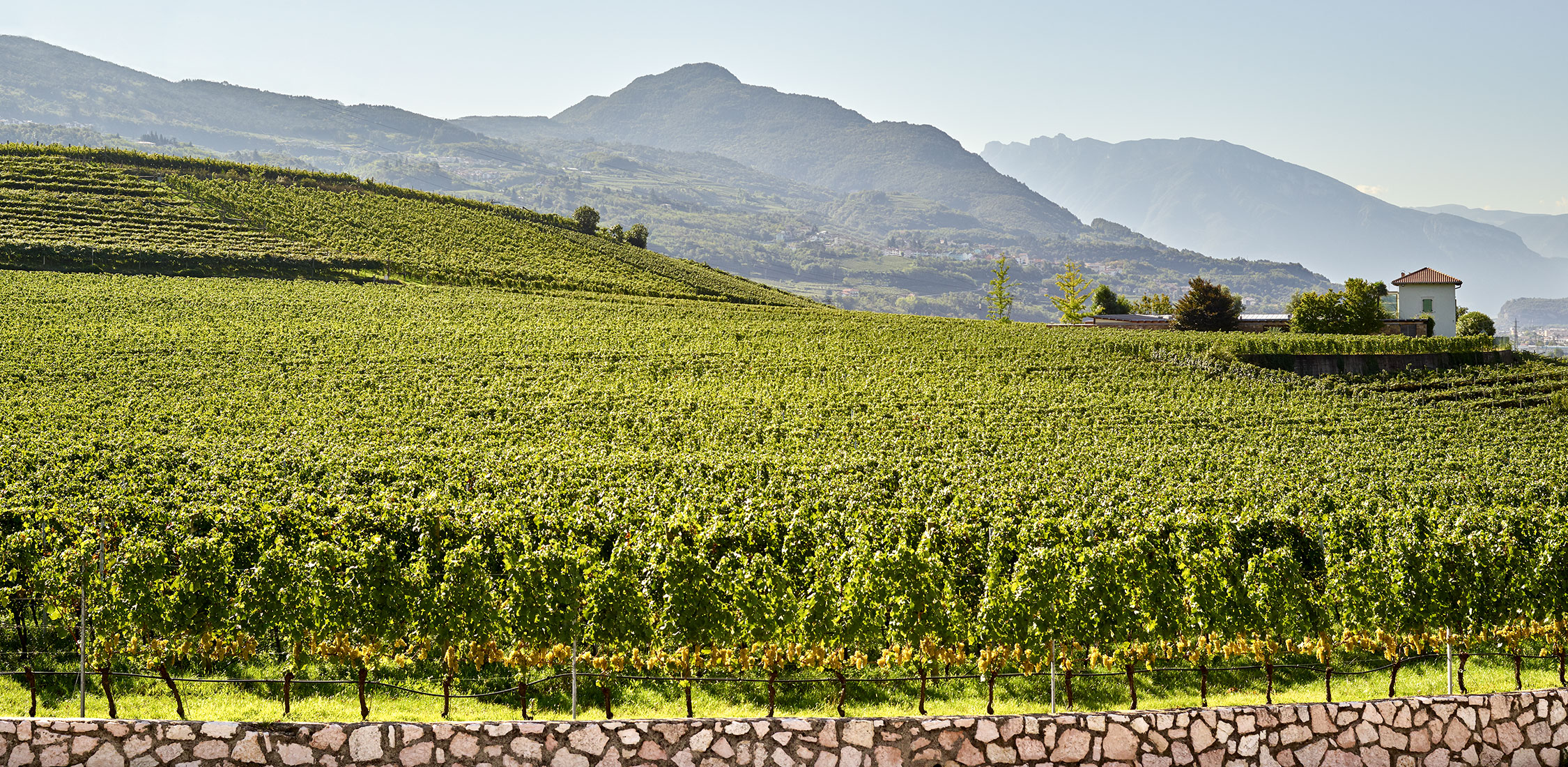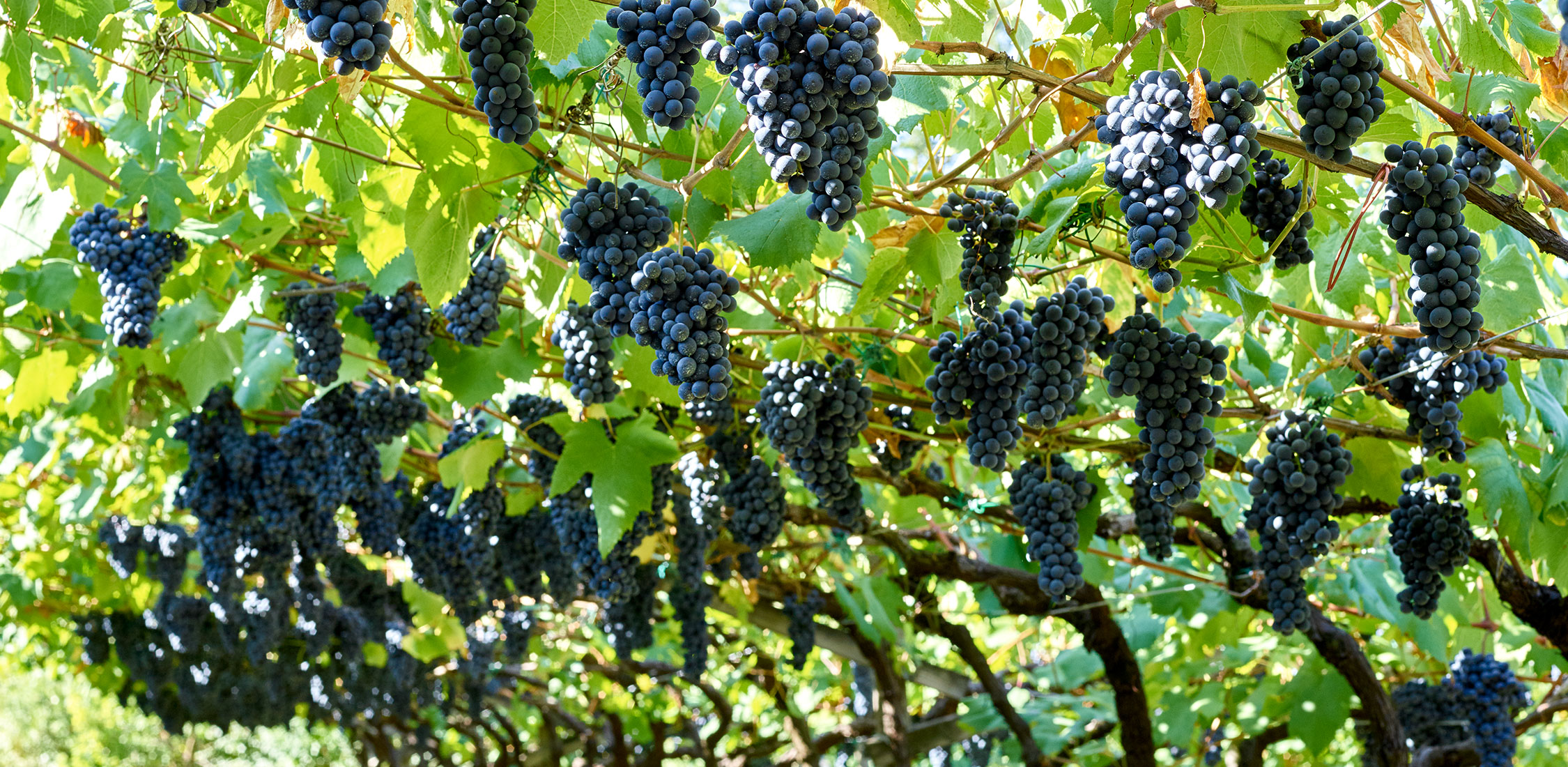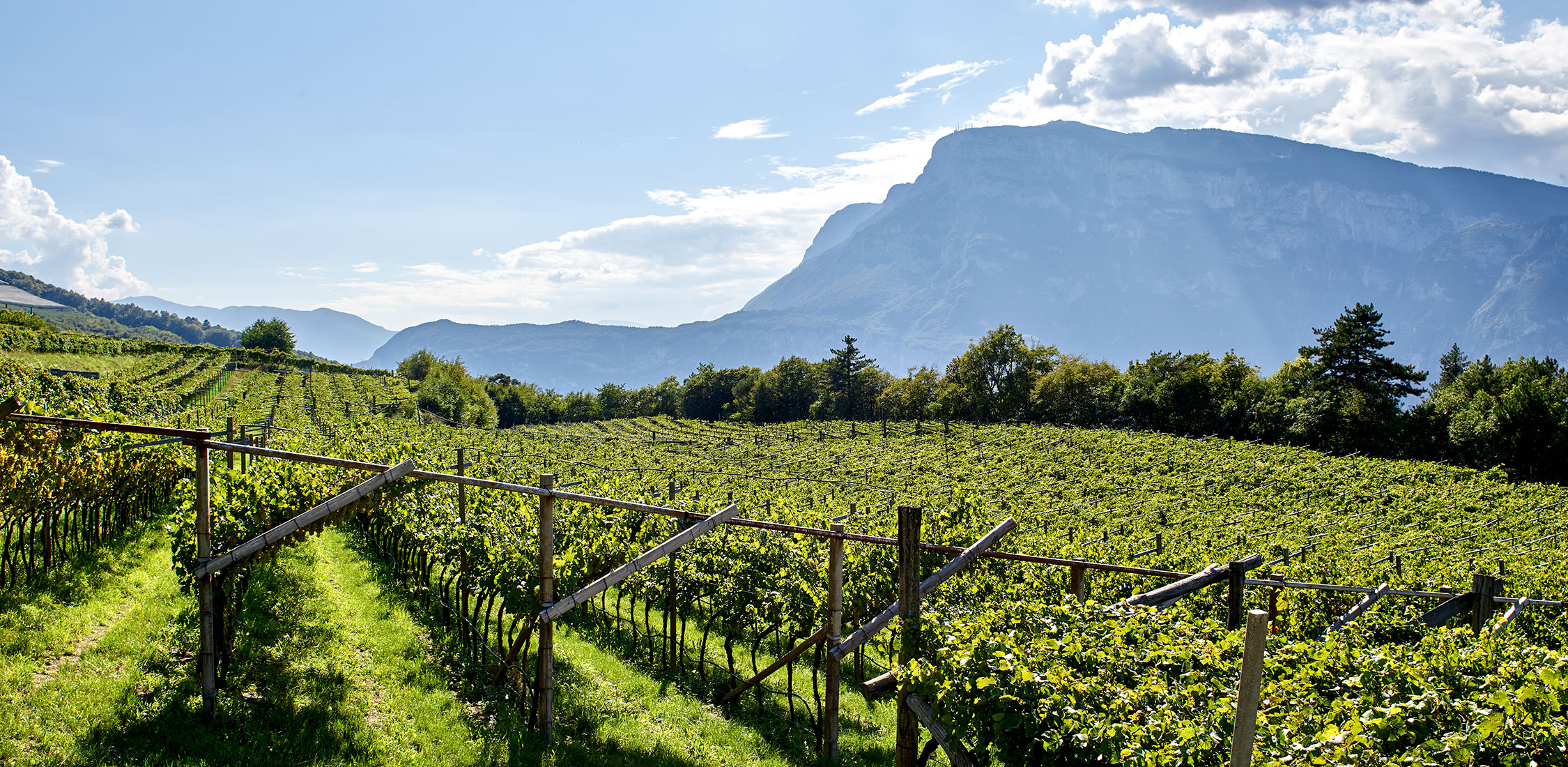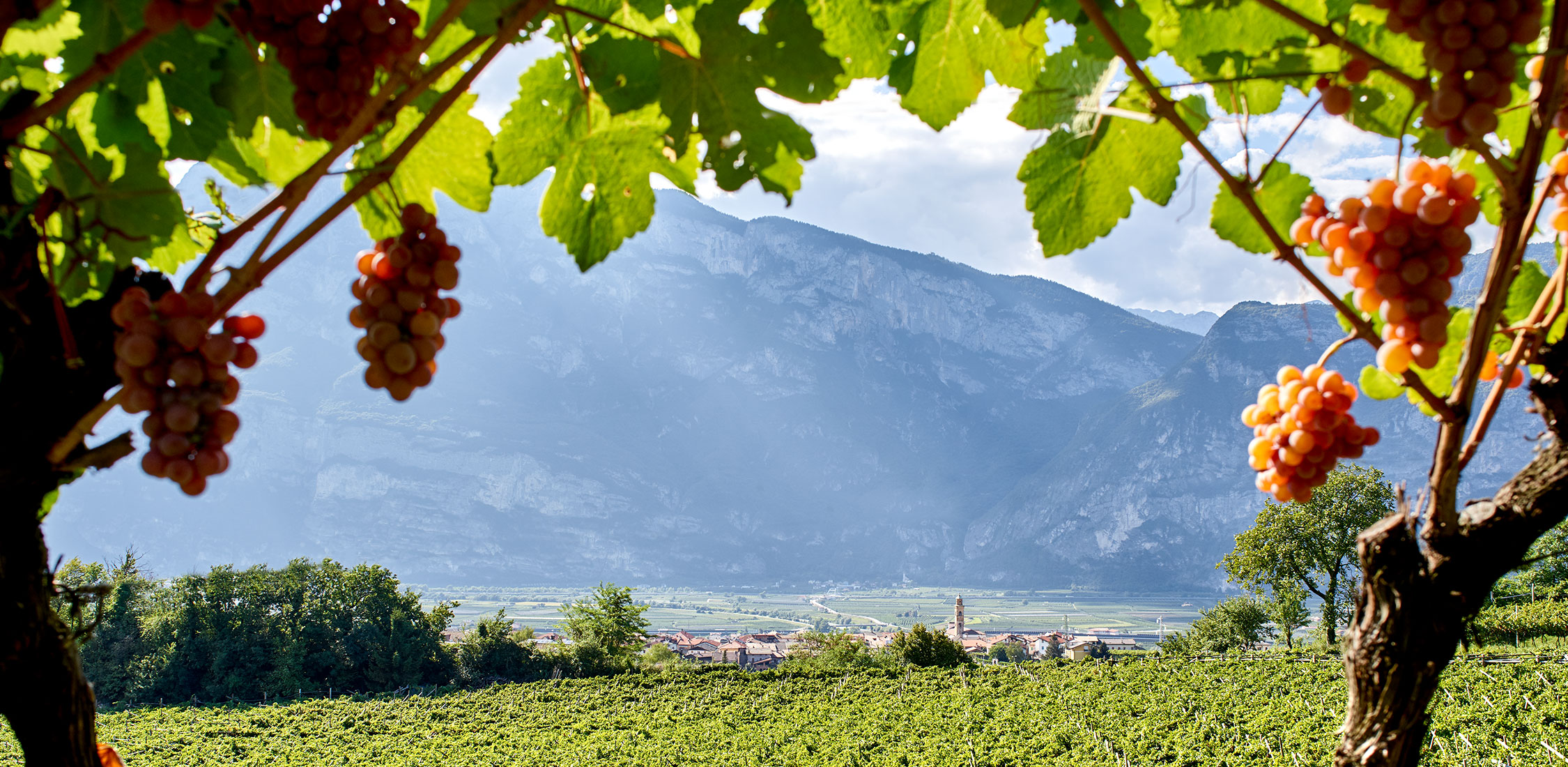The land that embraces Cantina La-Vis’s vineyards is a natural amphitheater, a three-dimensional landscape of rolling hills, gentle slopes, and valleys that give character to every vine.
Today, more than 400 passionate members — working side by side with the winery’s team of oenologists and agronomists — care for around 400 hectares of vineyards, primarily around the village of Lavis and the enchanting Avisian Hills.
Thanks to their excellent sun exposure and the gentle touch of a breeze flowing from Lake Garda – Ora del Garda – the vineyards enjoy a unique microclimate. This current of air softens the rigors of the subalpine climate, keeps the environment dry, and allows the grapes to ripen perfectly. Significant temperature variations between day and night preserve the grapes’ natural acidity and intensify their aromatic profile. The result is a range of wines that capture the essence of the land — from the fine, mineral notes of gray calcareous soils to the richer, more powerful character of red clay.
Ranging from 250 to 550 meters above sea level, these vineyards offer remarkable organoleptic diversity. While the traditional Trentino pergola remains the primary training system, it is complemented by trellising techniques tailored to each soil and grape variety.
A true pioneer both in Trentino and across Italy, La-Vis introduced in the 1980s the Zoning Project — based on the principle of “the right vine in the right place.” Building on this legacy, the winery’s forward-thinking approach today not only enhances the unique identity of each vineyard but also enables La-Vis to proactively meet the challenges of climate change, turning them into opportunities for the future. Central to this vision is the Soil Map, a scientific document detailing the unique pedoclimatic features of the territory.
Every bottle from Cantina La-Vis is more than just wine: it is the result of harmony between man and nature, a story that crosses time and generations, bringing the authentic soul of Trentino directly into the glass.







